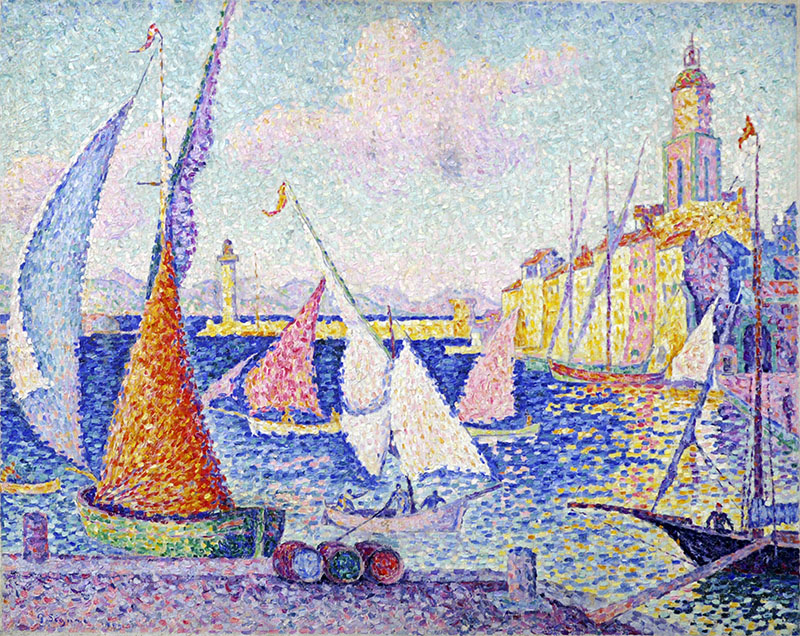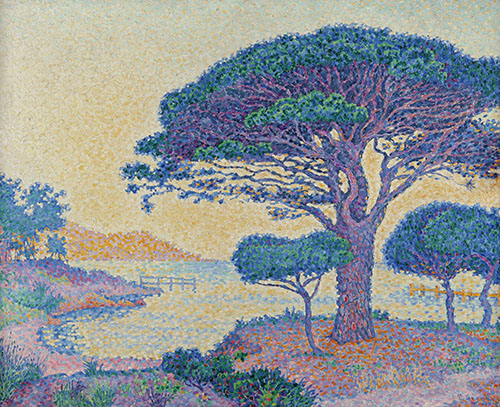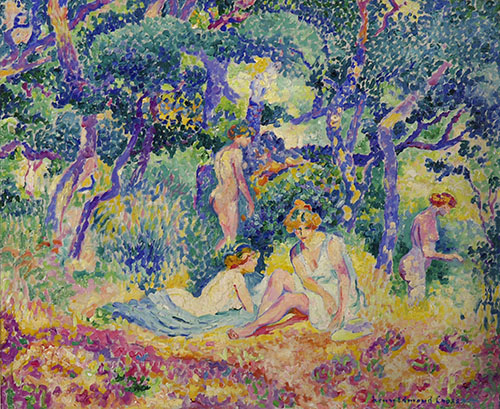Home Get inspired All about Saint-Tropez
Saint-Tropez and the painters
Great painters once set down their easels in Saint-Tropez and succumbed to the charms of this enchanting place, conquered by the beauty of the landscapes and the particular brilliance of light and colors.
Among those who found it a great source of inspiration, there is one who remains inseparable from Saint-Tropez: Paul Signac.

In 1892, he went down the Canal du Midi aboard his boat “Olympia”, and landed in Saint-Tropez where he fell in love with this small port. He bought a house there, La Hune, not far from the Graniers cove. He is nicknamed “the photographer” by the Tropezians who have not seen a painter before!
Paul Signac, who will remain for nearly twenty years in Saint-Tropez, also dividing his time between Paris and Brittany, is at the origin of the craze for the village since he invites many Parisian artistic personalities: Luce, Matisse , Marquet, Fénéon, Person, Manguin …
The autodidact Paul Signac has a passion for color and light. His meeting with the painter Georges Seurat will change his life and his style and pave the way for a new vision of painting through pointillism, a pictorial technique that uses the juxtaposition of small touches of round or square colors rather than mixtures of colors on the pallet. Camille and Lucien Pissaro, Albert Dubois-Pillet, Henri Edmond-Cross, Théo Van Rysselberghe, Henri Matisse, Robert Delaunay and even Van Gogh were inspired by this technique that Paul Signac will explain in a capital book “From Eugène Delacroix to the neo- impressionism “.
Paul Signac has immortalized the colors of Saint-Tropez in major works including: La Bouée rouge, Port au soleil couchant, Saint-Tropez, the port, Saint-Tropez Tartanes à quai, Saint-Tropez, the lighthouse.

For Charles Camoin too, Saint-Tropez played an essential role, representing almost the unique setting of his work and having directly contributed to his art and his reputation. It was during the summer of 1905 that he discovered Saint-Tropez, visiting his friend Signac.
André Dunoyer de Segonzac produced many still lifes there in which the heat, the sun and a frank light shine through. The treatment of colors refers to the solar nature of the peninsula. There he painted nudes that differ markedly from those painted before his installation in Saint-Tropez, much more in curves and sensual volumes, in unison with nature. He finds his inspiration from his frequent swimming, with Colette, or his friends and observes attitudes, takes notes, makes sketches from which several works will result: Nude with a red umbrella, Games on the beach of Bouillabaisse, The Beach…
In 1909, it was the turn of Pierre Bonnard, invited by Henri Manguin, to discover Saint-Tropez. His few passages will leave a scarce work, around twenty paintings at most. Nevertheless, Saint-Tropez has played a prominent role in its creations because there will be a before and an after Saint-Tropez. This is what he will tell in a fictitious letter to his mother, where he speaks of “the sea, the yellow walls, the reflections as colorful as the lights” and uses words which are those of a colourist, which he is not yet !

Saint-Tropez has become one of the most active centers of the pictorial avant-garde at the start of the 20th century.
This is evidenced by the exceptional collection of paintings and sculptures on display at the Annonciade Museum, which makes it “the most beautiful of small museums in France”.
Do not miss to visit it, you will discover stars of modern art: Signac, Seurat, Braque, Bonnard, Vuillard, Van Dongen, Matisse, Manguin, Maillol …


